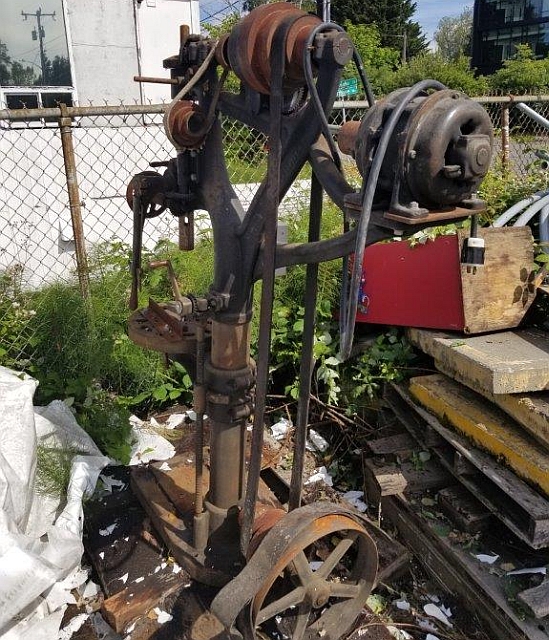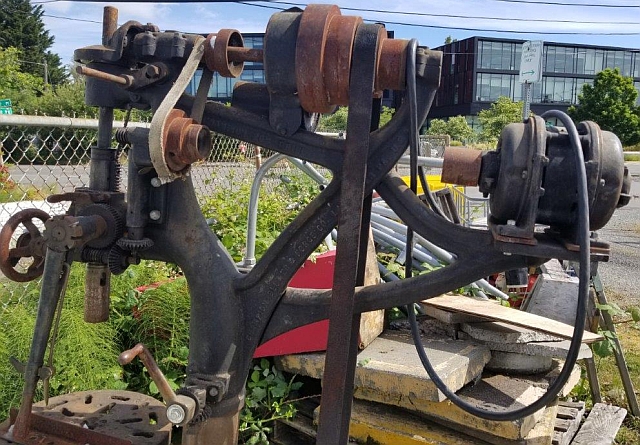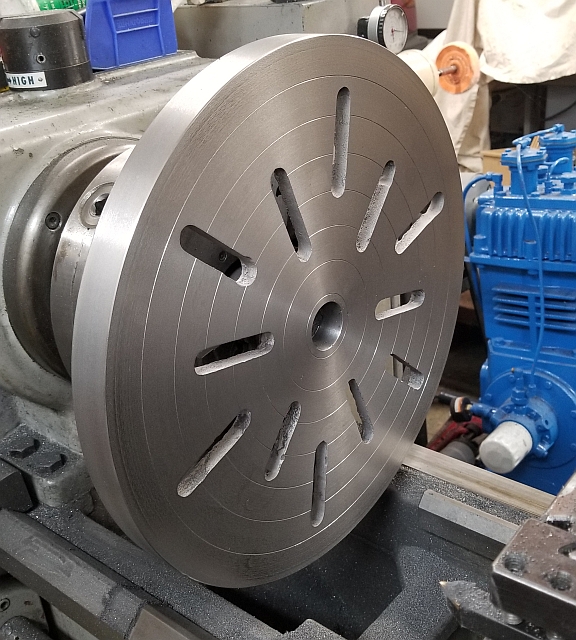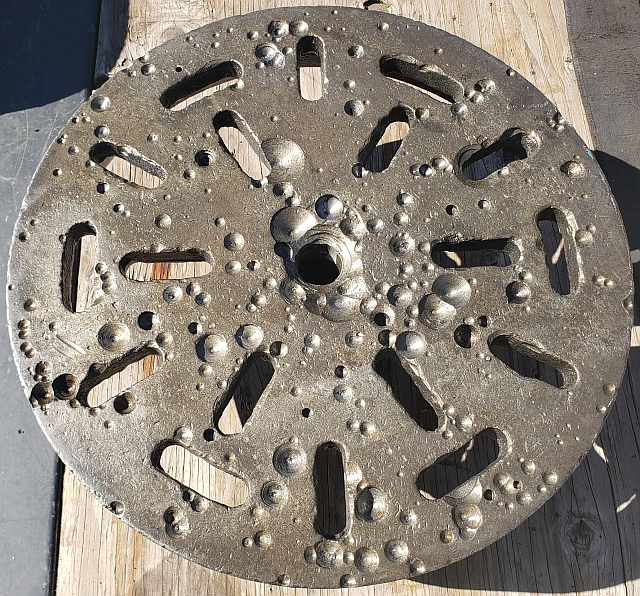metalmagpie
Titanium
- Joined
- May 22, 2006
- Location
- Seattle
So last year I restored a Canedy Otto 20" model 36 drill press, as some of you may remember. I got a call from a friend who volunteers at a semi-private place which has a yard full of industrial items mostly related to woodworking. They have a Champion 20" drill press they are going to scrap unless they find someone like me who wants it. Here are a couple of pictures:


You can't really see everything. The table, as usual, is badly overdrilled. But I know how to fix that. Here's the last badly overdrilled camelback table I restored:

It has a 4 MT spindle and power downfeed. Everything turned and moved albeit with some effort. I looked at all the gears I could see and I couldn't see any broken teeth or repaired teeth. It does have a motor which is of the same period as the machine. I think it's 3/4hp because the nameplate on the motor says 3 amps at 230V. The motor turns very freely and I'm confident I can make it run again. All of the wiring and motor controls are there. The machine has 3 flat belts - from the motor down to the jackshaft, from the jackshaft up to the top shaft, and from the top shaft down to the powerfeed mechanism. None of the belts are usable.
I'm looking for sources of information about this machine. Like most of these, mine is missing the powerfeed trip collar. But nearly everything else is there.
I'm also trying to decide whether I should take on another resto job so like the one I did recently. To this machine's credit, it has a larger taper and the gears appear to be in better condition. I don't know if there's a "cool factor" difference.
What do you think?
metalmagpie


You can't really see everything. The table, as usual, is badly overdrilled. But I know how to fix that. Here's the last badly overdrilled camelback table I restored:

It has a 4 MT spindle and power downfeed. Everything turned and moved albeit with some effort. I looked at all the gears I could see and I couldn't see any broken teeth or repaired teeth. It does have a motor which is of the same period as the machine. I think it's 3/4hp because the nameplate on the motor says 3 amps at 230V. The motor turns very freely and I'm confident I can make it run again. All of the wiring and motor controls are there. The machine has 3 flat belts - from the motor down to the jackshaft, from the jackshaft up to the top shaft, and from the top shaft down to the powerfeed mechanism. None of the belts are usable.
I'm looking for sources of information about this machine. Like most of these, mine is missing the powerfeed trip collar. But nearly everything else is there.
I'm also trying to decide whether I should take on another resto job so like the one I did recently. To this machine's credit, it has a larger taper and the gears appear to be in better condition. I don't know if there's a "cool factor" difference.
What do you think?
metalmagpie


 Seriously though, while I am lucky my table is relatively unmarred, I rarely ever see the top. Vise is there most of the time and only gets removed when hoisting a plate or whatever that doesn't fit in the vise. Either way table is mostly blocked from view.
Seriously though, while I am lucky my table is relatively unmarred, I rarely ever see the top. Vise is there most of the time and only gets removed when hoisting a plate or whatever that doesn't fit in the vise. Either way table is mostly blocked from view.